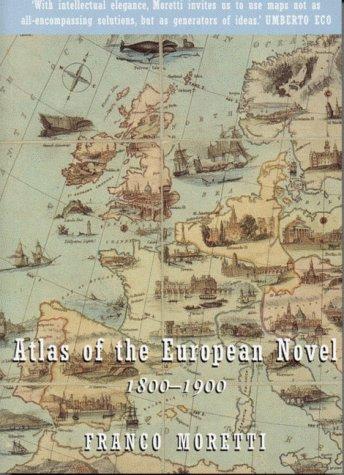Paperback, 192 pages
English language
Published 1999 by Verso.

Paperback, 192 pages
English language
Published 1999 by Verso.
A groundbreaking study in literary geography. An Atlas of the European Novel 1800-1900 explores the fascinating connections between literature and space. In this pioneering study, Franco Moretti presents a fresh and exciting perspective en the European novel. In a series of one hundred maps, Moretti illuminates the geographical assumptions of nineteenth-century novels and the geographical reach of particular authors and genres across the continent. A good map, he discovers, can be worth a thousand words in posing new questions and allowing us to see connections that have so tar escaped us. Reading his Atlas, we become aware of the secret structure of Dickens's and Conan Doyle's London, and see how the fictional settings of Austen's Britain, or picaresque Spain, or the France of the Comedie humaine imagine national identity in different ways. In a final chapter on "narrative markets," Moretti tells us which books were most popular in the provincial …
A groundbreaking study in literary geography. An Atlas of the European Novel 1800-1900 explores the fascinating connections between literature and space. In this pioneering study, Franco Moretti presents a fresh and exciting perspective en the European novel. In a series of one hundred maps, Moretti illuminates the geographical assumptions of nineteenth-century novels and the geographical reach of particular authors and genres across the continent. A good map, he discovers, can be worth a thousand words in posing new questions and allowing us to see connections that have so tar escaped us. Reading his Atlas, we become aware of the secret structure of Dickens's and Conan Doyle's London, and see how the fictional settings of Austen's Britain, or picaresque Spain, or the France of the Comedie humaine imagine national identity in different ways. In a final chapter on "narrative markets," Moretti tells us which books were most popular in the provincial libraries of Victorian Britain, and charts the European diffusion of Don Quixote, Buddenbrooks, and the great nineteenth-century bestsellers. In Franco Moretti's Atlas, maps are net ornaments, but analytical tools which, in making connections explicit and visible, allow us to 'see' literature in a completely new way. This path-breaking study suggests that space may well be the secret protagonist of cultural history.